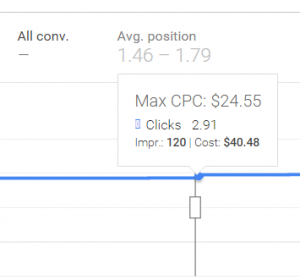 Whether you are in IT or product development, your simulation performance can improve. Virtual simulation has become a critical enabler to any company looking to design more successful products.
Whether you are in IT or product development, your simulation performance can improve. Virtual simulation has become a critical enabler to any company looking to design more successful products.
The insight that can be derived before a physical prototype is constructed has consistently been shown as a Best-in-Class capability. The traditional way to manage and implement these simulation applications has been to take a siloed approach.
However, this tactic can leave huge gaps in an organization’s visibility into simulation performance and breed inefficiencies. There are two groups that a stovepiped simulation platform negatively impacts, Product Designers and IT, and, as new Aberdeen research shows, the best simulation platform is one that is consolidated.
For IT:
For the IT group, the use of the traditional siloed simulation platform all comes back to waste and inefficiency. First there is the sheer overhead of relying on multiple simulation vendors – install costs and wasted licenses really add up over time. There is also a lot of time that is wasted as a result of a siloed simulation platform.
Tying together different applications for co-simulation and dealing with data transfer issues are some of the drawbacks that IT personnel have to deal with regularly. Successful companies have started to consolidate the number of simulation vendors they use to ease the burden of their IT department. Indeed, over half of all respondents indicated that consolidation improved their IT operational efficiency, while only 25% said it did not have a positive impact (Figure 1 below).
Figure 1: The Impact of Consolidation on IT Efficiency

Also for those of you in the IT group, one thing to keep in mind is that 87% of designers expected their model sizes to grow in the future. So, even though you may be able to deal with a siloed platform at the moment, computational requirements are going to expand and you can’t keep spending your time gluing workflows together with scripting or other software components. Those companies that have consolidated have reported the following sharp improvements in their analysis performance:
- 17% Decrease in the time to prepare models for analysis
- 17% Decrease in the time from set up to results
- 11% Decrease in computer processing time of analyses
The benefits of a consolidated simulation platform are going to be essential for future simulation models.
For Product Designers:
For the designers, the use of the traditional siloed simulation platform all comes with limitations in the amount and breadth of simulation. The insights that virtual simulation have brought to designers has proven invaluable. This naturally has led to companies looking to simulate as early and as often as possible during a product’s lifecycle. In fact, the research shows that Best-in-Class companies are more likely than their peers to simulate product performance all the way from detailed components to manufacturing (Figure 2)
Figure 2: Simulate Early, Simulate Often

However, if designers are stuck with a siloed simulation platform all of these analyses cannot be done. These companies only have the time to simulate the verification and testing of a product, which is valuable, but the benefits of constant simulation are far more impactful.
A siloed platform also inhibits collaboration between designers, which is critical as products today rely on multiple disciplines of engineering (electrics, structures, fluids). The data backs up the thinking as well, those companies that have consolidated now experience five less hours of wasted time per week on activities (handling large files, data transfer, mesh creation, etc.) that are not analyzing results. This allows the designers in these companies to focus on what is important – an optimal product.
Beyond the benefits to these two individual groups is a benefit to the bottom line, as companies that have made efforts to consolidate the number of simulation vendors they use have seen a 7% decrease in TCO the last 12 months. Want to learn more?
Join me on April 2nd at 1 pm EST (10 am PST) and find out why a consolidated simulation platform is critical to Best-in-Class product development.
In this webinar, we will dive deeper into:
- The inefficiencies that designers and IT have to combat as a result of a siloed simulation purchases
- Why companies have started to look towards consolidation as an effective option
- The benefits that both groups have seen as a result of this consolidation
Can’t make it? Don’t worry; register now, and we’ll remind you to watch the recorded event on-demand.
Read the Aberdeen report The Value of Virtual Simulation Versus Traditional Methods
(219)







